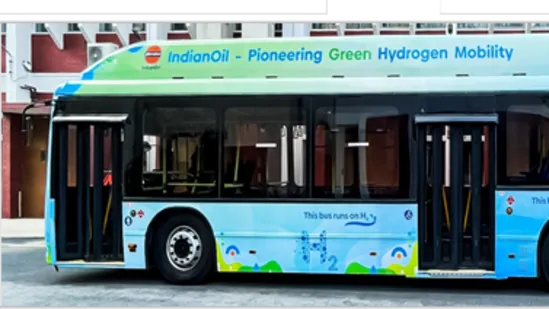Union Minister for Petroleum & Natural Gas, Hardeep Singh Puri, is poised to unveil India’s inaugural green hydrogen fuel cell bus on the prestigious Kartavya Path in Delhi this upcoming Monday. This groundbreaking endeavor, as reported by the Press Information Bureau (PIB), falls under the purview of Indian Oil’s determined initiative to subject 15 fuel cell buses to operational trials, all powered by the sustainable vigor of green hydrogen. These trials are designated to unfold along prescribed routes within the regions of Delhi, Haryana, and Uttar Pradesh. The inauguration of this remarkable program will be marked by the formal introduction of the first two fuel cell buses at the iconic India Gate.
This undertaking represents a monumental stride, distinguishing itself as India’s maiden endeavor to furnish green hydrogen, compressed to a formidable 350 bar pressure, for the propulsion of fuel cell buses. Notably, Indian Oil has taken steps to establish a refueling facility within its research and development bastion in Faridabad. This facility is adept at replenishing the reservoirs of green hydrogen, synthesized via the medium of electrolysis, harnessing the potential of solar photovoltaic panels.
Green hydrogen, cultivated through the channels of renewable energy, stands as a paramount exemplar of a low-carbon fuel and a formidable substitute for imported energy resources. It capitalizes on India’s copious reservoirs of renewable energy, proffering adaptability across an extensive spectrum of applications, encompassing fuel and industrial feedstock. It holds the potential to supplant feedstocks derived from fossil fuels, thereby revolutionizing sectors such as petroleum refining, fertilizer production, and steel manufacturing.
Fuel cell technology has been steadily ascending the echelons of eminence within the ambit of electric mobility, wherein hydrogen assumes the mantle of the primary fuel for these advanced cells. The electrochemical alchemy embedded within fuel cells efficaciously transmutes hydrogen and oxygen into the essence of water, all while generating a flux of electrical energy.
Fuel cell-powered vehicles command a slew of advantages, including extended ranges and abbreviated refueling intervals in comparison to their battery-powered counterparts. Hydrogen gas, the lifeblood of these vehicular marvels, finds sanctuary within onboard reservoirs, typically configured to withstand the intense pressures of 350 bar.
Upon the advent of these preliminary pair of buses, they shall collectively traverse an impressive expanse, tallying more than 300,000 kilometers over the course of comprehensive long-term evaluations pertaining to their operational robustness and durability, elucidates the statement issued by the PIB. The treasure trove of data unfurled through these meticulously orchestrated trials shall serve as a priceless national asset, effectively shaping the contours of India’s zero-emission mobility landscape, all propelled forward by the dynamic force of green hydrogen.
